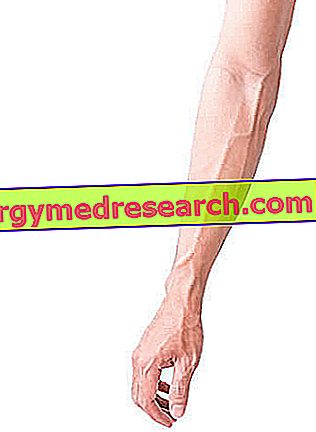Curated by Luca Zandonà
One of the most controversial and sometimes confusingly interpreted topics is undoubtedly the one concerning muscle stretch.
When should I do it before or after the session? How long? What is the best technique? The purpose of this article is to clarify the most common doubts on the subject, sometimes due to at least questionable information given by professionals in the sector.

Dynamic and static
There are essentially two types of stretching, dynamic and static.
The difference is very simple, with dynamic we intend to stretch muscles with movements at speeds that can be slow, medium or fast, while with static stretching we intend to keep the muscles in a stretched position for longer or shorter periods.
Some experts in the sector propose the idea that dynamic stretching, especially at high speeds, leads to injuries and does not give tangible results, while the static one would seem the best way to increase muscle flexibility with the least risk of muscle injuries.
Is this perhaps true? Personally, I do not believe there is anything correct when a concept is generalized and individual needs and problems are not taken into consideration.
In fact, there are numerous studies that indicate that the classic static stretching, taking the stretch position for 20-30 seconds, even with very low risk of injury, does not lead to significant results. The motive is very simple: it is not similar to any movement that we can face in everyday life nor in the course of sports activities of any level. It also appears that holding the stretch position for prolonged periods, especially if the muscles are stretched excessively and holding the breath, leads to a muscular contraction of protection that is exactly the opposite to our purpose of relaxing the muscles.
The dinamicom lengthening on the other hand, although much more similar to the movements performed in the course of our daily activities, must be performed correctly if you do not want to incur injuries.
Breathing during stretching
This is probably one of the less discussed points but that undoubtedly covers a fundamental importance. In fact, numerous studies indicate that our musculature instinctively relaxes when we breathe out and contracts when we breathe in or hold our breath.
Is this important to remember? Of course yes! We can indeed use this information to our advantage. Why not use breathing to control our stretching? One of the most effective methods I have been able to use is in fact based on extending the muscles during expiration and relaxing them during inhalation, working on respiratory "waves" rather than according to arbitrarily pre-established times. If, for example, we want to stretch the knee flexors, I found it very effective to use 3 or more breathing "waves", using as many as necessary to see a significant improvement in the range of movement. One of the tips I want to give is to work with long and deep breaths and controlled movements, especially in the initial period, then moving to faster "waves" once you have mastered this technique.
One of the most effective methods recognized today is the so-called PNF stretching ( proprioceptive neuromuscular facilitation ); this consists in stretching and contracting the muscles during the stretching phase to increase muscle stretching by taking advantage of the tiredness of the muscles that was contracted a few seconds before. It is definitely a valid system that seems to give remarkable results in short periods.
The moment is everything
So when is the best time to do stretching? The answer is that there is no better time, it all depends on the type of stretching and the purpose.
I have personally found it useful to use a medium-fast dynamic type of stretching at the beginning of the session, as a warm-up method, because a slow stretching, or worse still "static", in this phase only worsens the physical performance and increases the risk of injuries .
If instead we consider a stretching used to lengthen the muscles and improve postural imbalances the best moment is without a shadow of a doubt immediately after the end of the session or in the days of non-training. In fact it seems that the best progress is achieved with a medium-high body temperature that can therefore be due to physical activity or external factors. What better time then if not after an intense training session?
If, on the other hand, you want to perform a stretching session on rest days, the best method is to do a short warm-up for 5-10 minutes of light aerobic activity or immediately after a warm bath-shower or sauna-turkish bath. It is important to remember not to exceed 15 minutes of heating due to external factors; in fact there seems to be a mechanism according to which the organism automatically lowers the body temperature when exposed to heat treatments higher than these 15 minutes.
Obviously stretching sessions should be avoided as soon as they wake up in the morning; at this stage of the day the body temperature is obviously lower with lower margins for improvement.
Which muscle groups stretch
Again, the answer is that individual needs should be taken into account rather than following a pre-selected code.The best way to select which muscle group to stretch is to rely on an expert in posture and muscle imbalance, who can identify musculature that is overused and shortened and that is too often overlooked and over-stretched due to the physical predominance of antagonist muscle groups.
The painful area is not always the one that must be stretched. The pain can in fact be caused by another muscle group that needs to be stretched.
Take for example a pain in the knee flexors. A very common problem of pain in this area is due to the fact that the knee flexors also deal with extending the hip. Therefore, if the opposite hip flexors are shortened, the latter will not allow the hip extensors to extend correctly; this will then lead to an over-use of the knee flexors, resulting in pain. The pain experienced on the knee flexors will therefore not be due to anything other than a restriction against hip flexors.
The advice of an expert will therefore be able to clarify on which areas we will have to concentrate in order to obtain significant results.



